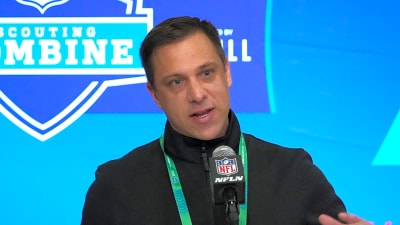
The Boston Celtics led with 64 wins in the NBA regular season last year, which is their highest since 2008. Yet, Brad Stevens isn’t sitting quietly despite the team reaching the finals. Stevens is overhauling the roster in a league dominated by tweaks. Why? It isn’t simply about the upcoming second apron. It goes much deeper, touching on ownership trust, accountability, and a growing hunger that fuels banners.
For now, the Celtics’ chances are a little underwhelming, with major sportsbooks currently offering them 2025-26 NBA championship odds at +1400 for the title. For now, the main favorites include the Thunder, Cavaliers, and the Knicks. Other bookmakers don’t have odds in place because the roster isn’t locked in yet, but these odds can change in the blink of an eye.
Online sportsbooks are proving particularly popular among fans due to the range of props, sharper lines, and added flexibility they offer punters. Another advantage of these sites means punters can make real-time updates to capture every possible change as Steven’s overhauls the team (source: https://casinobeats.com/betting-sites/). Stevens clearly has a distinct plan. He aims to sharpen the edge as the team focuses on urgency rather than continuity this time. In a recent NBC Sports Boston interview, Brad Stevens detailed how the changes were more than a simple avoidance of second-apron handcuffs and luxury tax penalties. He suggested that ownership has given them a path forward, but they still wish to remain smart. The comment shows how the roster change isn’t about tightening a belt. It’s about competitively recalibrating the team.
The move makes this summer more intriguing because Boston didn’t simply extend Derrick White and Jrue Holiday. The team doubled down on a defensive strategy while allowing veterans like AI Horford to step down. Meanwhile, Kristaps Porzingis’ foot injury raises some concerns but also gives Stevens the chance to examine depth and test a different brand of size. No one takes anything for granted anymore.
While some of the front offices have reacted to CBA pressures that said the NBA team’s roster building was too talented or the ownership was willing to foot bills to pursue banners, Stevens aims to build with those concerns in mind. The second apron is a limit on flexibility, movement, and the ability to course-correct in the middle of the season. Stevens doesn’t wish to find himself stuck with a roster that ages out or remains too flexible in the face of chaos during the 82-game championship. Instead, he’s focusing on versatility right now.
The Celtics have held one of the most talented top-end rotations in the NBA for a long time. However, Stevens isn’t willing to gamble on “good enough” anymore. He wants marginal competition with guys like Neemias Queta fighting for genuine backup center minutes. He wants Jaden Springer to prove his defensive value wasn’t a once-off show in Philly and Sam Hauser to get more than garbage-time looks.
Steven also mentions motivation after heartbreaking game 7 exits and multiple deep playoff runs. He feels that the core feels content now, so tinkering sends a message that no one’s role is secure until they earn it. White’s extension wasn’t merely a steady play reward. It was a signal to other players that anyone who does the work and keeps grinding will be looked after by Boston.
Another key element in how the roster is changing is about development. The more recent Holiday and Porzingis trades during the second apron may concern some, but Stevens has a plan to allow upcoming stars to shine and show their worth. He isn’t chasing big names to fill the bench or throwing second-apron picks at veteran players. He wants players who will push the starters and challenge Brown and Tatum in practice. It also explains why Celtics passed on the splashier free-agent deals to focus on internal growth and extensions.
One concerning element of the roster overhaul is how ownership roles have played out. The Celtic’s group of investors and Wyc Grousbeck could have banked on huge luxury taxes in the tighter market, but they didn’t. However, it has allowed Stevens to approach the off-season with more clarity. He isn’t trying to cut corners. He is trying to build a more sustainable roster.
Boston fans aren’t new to this change. Danny Ainge was better known for holding assets and waiting for perfect deals, but Stevens is action-oriented. Every change this summer had a purpose, whether it was letting Oshae Brisset walk to find a new and more dynamic defender or re-signing Luke Kornet for locker room glue.
Stevens isn’t listening to the noise from betting markets or critics. His message is clear: titles aren’t earned on paper. They are earned through depth, preparation, and a refusal to coast. That’s why this Celtics version feels hungrier than last year’s, even with questions about Horford’s minutes and Porzingis’ timeline. Stevens clarified what motivated the overhaul: trust, development, sustainability, accountability, and the push for Banner 18.
More must-reads:
- Josh Giddey makes more Bulls history with triple-double in win
- Steve Kerr responds to Warriors owner's criticism in leaked email
- The 'Youngest 40-point NBA games' quiz
Breaking News
Trending News
Customize Your Newsletter
 +
+
Get the latest news and rumors, customized to your favorite sports and teams. Emailed daily. Always free!








